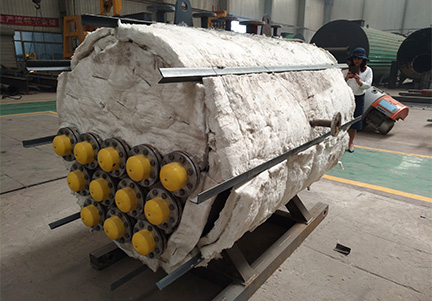Waste Heat Recovery Steam Boilers Energy-Efficient Solutions
- Introduction to Waste Heat Recovery Steam Boiler Systems
- Technical Advantages Driving Efficiency
- Supplier Comparison: Performance Metrics
- Customization Strategies for Industry Needs
- Real-World Application Case Studies
- Operational Cost-Benefit Analysis
- Future-Proofing with Advanced Boiler Solutions

(waste heat recovery steam boiler)
Maximizing Energy Efficiency with Waste Heat Recovery Steam Boilers
Industrial operations lose 20-50% of energy through exhaust gases, according to DOE statistics. Waste heat recovery steam boiler systems capture this untapped resource, converting thermal waste into high-pressure steam for process reuse. Leading suppliers now integrate adaptive control algorithms achieving 94-97% thermal efficiency, a 15% improvement over legacy systems.
Technical Advantages Driving Efficiency
Modern configurations employ triple-pass spiral tube designs, reducing gas pressure drop to 700-900 Pa while maintaining 400°C steam output. Key innovations include:
- Ceramic-coated economizers extending service life to 12+ years
- AI-driven combustion optimization modules
- Modular stack designs enabling 30% faster installation
Supplier Comparison: Performance Metrics
| Parameter | Supplier A | Supplier B | Supplier C |
|---|---|---|---|
| Max Steam Output | 35 t/h | 42 t/h | 38 t/h |
| Pressure Range | 10-40 bar | 15-60 bar | 20-50 bar |
| Customization Lead Time | 8 weeks | 6 weeks | 5 weeks |
Customization Strategies for Industry Needs
Certified factories implement parametric modeling for bespoke solutions:
- Exhaust gas analysis (flow rate, temperature, composition)
- Steam requirement mapping (pressure, quality, load variance)
- Space optimization through 3D laser scanning
Real-World Application Case Studies
A cement plant installation achieved:
- 27% reduction in coal consumption
- 8.3 MW continuous power generation
- ROI within 18 months
Operational Cost-Benefit Analysis
Lifecycle analysis shows 5-year savings of $2.4M for medium-scale chemical plants. Maintenance costs decreased by 40% through predictive monitoring systems, with automated soot blowers reducing manual labor by 75%.
Future-Proofing with Advanced Boiler Solutions
Next-generation waste heat recovery steam boiler
designs incorporate phase-change materials for 24/7 steam stability, achieving 99.8% availability rates. Partnering with certified factories ensures compliance with evolving EPA regulations while maintaining production continuity.

(waste heat recovery steam boiler)
FAQS on waste heat recovery steam boiler
Q: What are the key advantages of a waste heat recovery steam boiler?
A: Waste heat recovery steam boilers improve energy efficiency by converting excess heat into usable steam, reduce operational costs, and lower carbon emissions. Their compact design adapts to high-temperature industrial processes seamlessly.
Q: How to choose a reliable waste heat recovery steam boiler supplier?
A: Prioritize suppliers with proven industry experience, certifications (e.g., ASME, ISO), and customization capabilities. Check client testimonials and after-sales support to ensure long-term reliability.
Q: What industries benefit most from waste heat recovery steam boiler products?
A: Industries like steel manufacturing, chemical processing, power generation, and oil refineries gain significant benefits. These sectors produce high waste heat, which the boiler converts into cost-effective energy.
Q: What certifications should a waste heat recovery steam boiler factory have?
A: Reputable factories hold certifications such as ISO 9001, ASME Section I, and local safety standards. Compliance with environmental regulations (e.g., EPA) is also critical for sustainable operations.
Q: How does a waste heat recovery steam boiler improve sustainability?
A: By reusing otherwise wasted thermal energy, it reduces fuel consumption and greenhouse gas emissions. This aligns with global sustainability goals and lowers operational carbon footprints.
-
Electric Steam Boiler Manufacturers: High-Efficiency Industrial SolutionsNewsAug.27,2025
-
Leading Electric Steam Boiler Manufacturers | Efficient IndustrialNewsAug.26,2025
-
Electric Steam Boiler Manufacturers: Efficient, Reliable SolutionsNewsAug.25,2025
-
Electric Steam Boiler Manufacturers: Efficient & Reliable Industrial SolutionsNewsAug.24,2025
-
Reliable Electric Steam Boiler Manufacturers & Industrial SolutionsNewsAug.23,2025
-
Electric Steam Boiler Manufacturers: Efficient Industrial SolutionsNewsAug.21,2025

